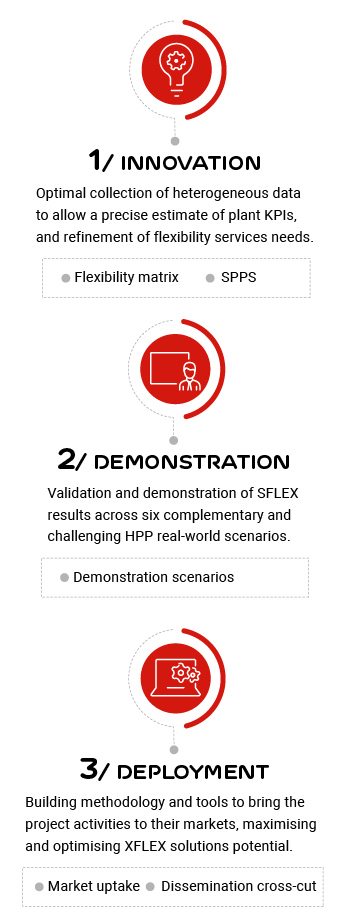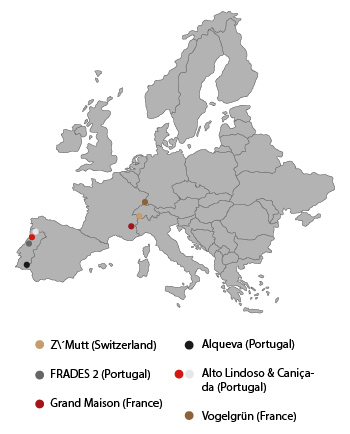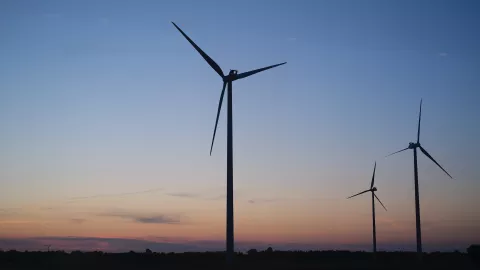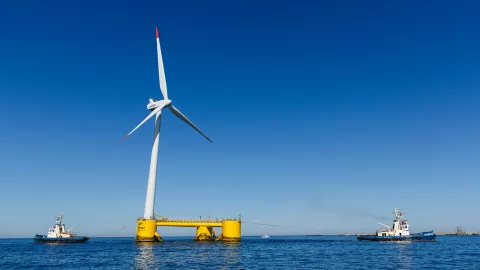Goals
The ultimate objective of the XFLEX project is to increase hydropower potential in terms of plant efficiency, availability and provision of flexibility services to the Electric Power System (EPS).
The high Renewable Energy Sources (RES) scenario of the decarbonization process relies on a drastic change of the European Union EPS with a massive integration of non-dispatchable RES and disconnection of the so-called conventional units, as greenhouse gases emitters. These changes influence drastically the provision of the power grid balancing and challenge the EPS operations and safety.
It is of upmost importance to provide reliable solutions to support the EPS with more flexibility services. Hydroelectric Power Plant (HPP) already significantly supports EPS flexibility in terms of regulation capability, fast frequency control, fast start/stop, fast generating to pumping modes transition, high ramping rate, inertia emulation, fault ride through capacity, etc. XFLEX aims to demonstrate an innovative methodology for system integration of hydroelectric technology solutions, variable speed being a key component and a reference, to provide further enhanced flexibility services assessed by a crosscutting analysis of their impact on both the technology and the market aspects.
In line with the XFLEX's vision to demonstrate solutions to build a low carbon and climate resilient future for the energy system mix.
The main objectives are:
- To demonstrate how to increase the potential of the hydroelectric technologies in providing flexibility to the electric power system while achieving an improved average annual overall efficiency of the hydroelectric machinery, providing high availability of the hydroelectric power plants and further maximizing their performances;
- To demonstrate the system integration methodology of hydroelectric technology solutions such as fixed and variable speed, pump power regulation, battery hybridization, advanced monitoring and digitalization, and to draw the road-map for the deployment of this system integration to the all kinds of European hydroelectric power plants, run of river, storage and pumped storage of all sizes; being existing, uprated or new.


Highlights
- Led by EPFL - Ecole Polytechnique Federale De Lausanne
- NEW R&D leads WP7 & WP8 corresponding to the Alqueva, Alto Lindoso and Caniçada demonstrators
- EDP Produção leads WP5, corresponding to Frades II demonstrator.
Demonstrators
Demonstrations are scheduled in the cases of run-of-river, storage and pumped storage HPPs and they cover cases of refurbished, uprated and especially existing HPP to be applied and scaled to any unit size.
- Z’Mutt (Switzerland): Pumped Storage Plant (PSP) which is currently equipped with 5 storage pumps and is part of the Grande Dixence hydroelectric scheme located in Canton Valais, in Switzerland. The aim is to replace the current unit 5 by a new variable speed reversible Francis pump-turbine and to enhance its performance by implementing the Smart Power Plant Supervisor (SPPS);
- FRADES 2 (Portugal): PSPP built between 2010 and 2017 on the Rabagão river, in northern Portugal, EDPP’s Frades 2 Hydroelectric Plant is equipped with two variable speed units, compose by two pump-turbines coupled with 420 MVA motor-generators. These units are Europe’s largest and most powerful doubly-fed induction machines, thus constituting a considerable technological advance for variable speed hydro plants;
- Grand Maison (France): PSPP built in the mid-80s, in the French Alps, Grand Maison PSP features the largest 1'800 MW installed capacity in Europe. The headwater and tailwater reservoirs feature 150 million m3 and 15 million m3 capacity, respectively, Pelton runners a being uprated to 170MW;
- Alqueva (Portugal):PSPP part of the Alqueva Dam complex, an infrastructure that allowed the creation of Europe's largest artificial lake. The facility is composed by two separate hydro plants; Alqueva I, commissioned in 2004, comprises 2 reversible Francis turbines with rated powers of 129,6MW in generating mode and 106,9MW in pumping mode; Alqueva II was a repowering of the plant, commissioned in 2017, adding another 2 reversible Francis turbines, with rated powers of 130MW in generating mode and 110MW in pumping mode;
- Alto Lindoso & Caniçada (Portugal):the Alto Lindoso Storage Hydroelectric Plant (SHP), commissioned in 1992, comprises 2 vertical Francis turbines with an outstanding gross head between 227 and 288m and a rated power of 317MW connected to 350MVA generators. Caniçada is a small-sized, medium head unit, which make it an ideal follower to Alto Lindoso, complementing the studies developed in Alto Lindoso to cover a wider range of unit size and head. The Caniçada SHP is in operation since 1954 and has been recently refurbished in 2017/2018 featuring 2 vertical Francis turbines with an outstanding gross head range between 77 and 121m and a rated power of 35 MW at 300 min-1 each, connected to 37 MVA generators;
- Vogelgrün (France):built in 1959 on the Grand Canal d'Alsace by the Rhine river, Vogelgrün is a Run-of-River (RoR) featuring four low head Kaplan units. It also includes two locks of major importance for international river navigation with more than 20,000 boats yearly. The units have long been used for flow and water level control, whereas new needs for grid support are emerging.


NEW R&D’s scope
NEW R&D will have central and leading positions through the XFLEX project development and its relative Work Packages (WP) where, more specifically, it will:
- Be responsible for two of the demonstrations in Portugal: Alqueva and Alto Lindoso, leading the installation and operation activities, as well as leading the conclusions reached by the corresponding WP7 & WP8.
- Strongly support EDP P in the other demonstrator in Portugal, Frades 2.
- Play an important role in WP2, by leading the definition of business use cases for the provision of flexibility services in the power system.
- Draw and update during the project a risk management plan, including risk identification, risk response planning, risk qualification and quantification.
- Will actively participate in assessing the benefits of flexibility solutions developed in WP 11.

